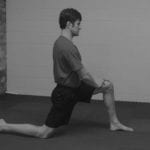Play gets a bit of a bad rap. It’s either just for kids or it’s simply time spent between doing something productive.
The sentiment is that work and training should be serious and determined. While play is for vacation and leisure and is just a break from the real business of life.
Yes it can be a break and a necessary downtime from the hustle. But that doesn’t mean it’s less important than your never ending paperwork and zoom meetings. And not just in our jobs but it also applies to our goals and objectives for physical fitness. “Messing around” in training and exercise is also seen as being unserious and waste of our already limited time.
Yet, the regular and deliberate inclusion of play can actually improve our capabilities and physical competence.
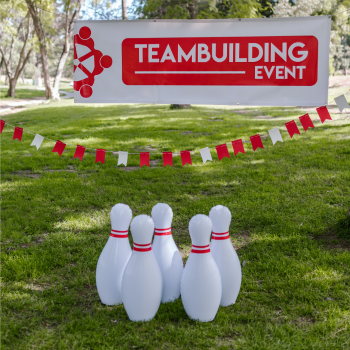 This isn’t to turn the relaxing and fun aspect of play into another thing you have to do like the cringy “Get ready for the designated fun time team building ice breaker event between 1:15 pm and 1:28 p.m. in the company break room!”
This isn’t to turn the relaxing and fun aspect of play into another thing you have to do like the cringy “Get ready for the designated fun time team building ice breaker event between 1:15 pm and 1:28 p.m. in the company break room!”
That would just be making it another task to improve your productivity. Instead let’s see how important it is and that it’s not just the opposite of useful work.
🎙 Related Podcast: how to play with yourself 🤓
The Benefit of Being Purposeful Without Attachment
Play can absolutely have a goal. Games have a goal, playing isn’t just throwing a ball without any intent. Get a few kids together throwing rocks into a lake and it quickly goes from random tosses to “I bet I can throw it farther than you! Let’s see who can get closer to that tree!”
The trick here is to have an intention/goal/aim but not be attached to it. Not letting it consume you with the need to WIN. This is where sports and contests lose their play aspect. It might as well be work at that point. See the emergence of professional video game tournaments for a prime example.
Yet you still should have a purpose and intention! The other extreme in movement skill training is the advice to “see where your body takes you, just move and be free!” Well waving and wiggling your arms and legs around can be nice, but it can also get old pretty quick when you aren’t really sure why you’re doing it.
But shimmying and waggling about can actually be useful! Do so again, but now go at with the intention of releasing built up tension from sitting and working at your desk, and once an hour or so get up and have in your head a mantra of “looseness”. Now the same actions become meaningful.
Understanding the intention and purpose is also key for those of us that identify as “Type A” people who readily fall into a GOTTA CRUSH IT mentality. And this is not a judgment at all, it’s simply an acknowledgement of personality type and there’s inherently wrong with it.
It’s when it goes to extremes that it can turn towards the unhealthy. Such as when everything you do is structured, with specific goals and measured baselines and goals to hit. This is a recipe for burnout and incorporating play into this rigid routine can bring remarkable benefits.
Creative Trainers Add Play to Workouts
I asked our certified GMB Trainers for examples of how they’ve seen their clients grow and improve with the addition of play into their training.
Michael Brazell remarked of his CrossFit clients:
The play session we did focused on Bear Walk, and allowing them to move forward, backwards, having them face different directions in the gym. I suggested they allow the music playing to influence their pacing and tempo.
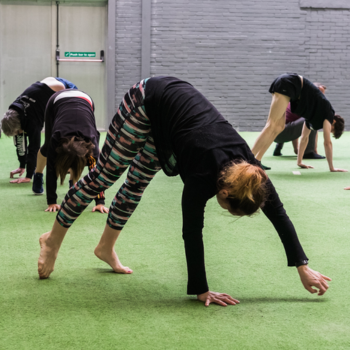 Encouraging breaks, and taking a few moments to check in with each athlete to ask about how they were feeling, was also really new.
Encouraging breaks, and taking a few moments to check in with each athlete to ask about how they were feeling, was also really new.
It was an invitation for both myself as their coach, and for them as the participant to have a deeper conversation about how the movement and training was impacting them.
What started off as a stressful acknowledgment of the word “Play”, became an invitation for them to laugh, and have some fun. I got a lot of positive feedback today specifically about the Play portion of our class yesterday.”
With one client, we would include different tasks (play distractions). We often reduced the intensity, alleviated expectations, and held space for exploration. Even though she had practiced yoga for many years, our sessions improved her mobility and posture in ways she never thought were possible. She also stated that post session she would feel much more relaxed and focused. She found the sessions better balanced her nervous system which also allowed her to stay focused for longer periods of time.
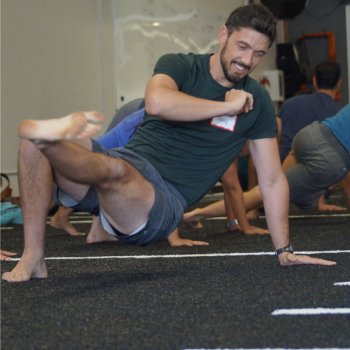 The state of mind associated with the liberation of “play” is something interesting to observe and experience as well. Definitely think play has contributed to my clients’ adherence. Play more, it’s good stuff.”
The state of mind associated with the liberation of “play” is something interesting to observe and experience as well. Definitely think play has contributed to my clients’ adherence. Play more, it’s good stuff.”
It’s More Fun When You Know What You’re Doing
Playing isn’t just doing whatever you want. Especially so if you would like to explore your physical capabilities. Again, I cringe when I hear the crowd that espouses play as freeform and doesn’t acknowledge the benefit and necessity of some foundational elements of practice.
Improvisation in music is a great example. If you take a guitar and stick it in someone’s hands and they’ve never really played before. And say “Oh it’s so fun. Just improvise.” I’m pretty sure they aren’t gonna have a good time.
You don’t need six months of rigid training before you’re “allowed to play”, but it’s important to recognize that there are some actions/activities that you can immediately perform in a playful manner and others that would be inappropriate and actually make things less fun.
View this post on Instagram
In a lot of my own practice, I often choose a theme for the day. It can be a broad movement direction such as rotation and side bending, jumping and landing. Or a more specific pattern, such as what I describe here with the “wrestling sit out” that I learned and did for repetition after repetition in wrestling practice. This gives a bit of a glimpse into how even a very familiar movement (for me) can be made fresh and interesting.
Practice is the Road to Playing
An example that most of us can relate to is when we start learning to ride a bike. It took a lot of concentration and effort just to stay on, never mind having fun and playing around. We have to practice a bit and feel comfortable and then we hit a point where we don’t even need to decide we want to play, it just happens.
In that context, we see that it takes a certain baseline minimum of skill at something, a threshold where purposeful and fun play begins. When we begin, and continue learning and progressing, simply stating “Oh, just improvise, just play. Just experiment,” is not really giving a lot of guidance to people that don’t have years of practice in that particular area.
Here’s another example that is a bit simpler. For the majority of people reading this, we can all walk and likely hop around a bit and feel safe doing it. So, walking a couple steps and hopping a bit is what we’ve already “practiced” a lot. This is something that we can play with for sure!
 Grab the nearest pen and throw it in front of you a bit and take 3 short alternating hops on your right foot until you can reach it. Then throw it to the side and try with your left.
Grab the nearest pen and throw it in front of you a bit and take 3 short alternating hops on your right foot until you can reach it. Then throw it to the side and try with your left.
Probably not a lot of fun for us, but show a toddler and they’ll be giggling and having a grand old time This is a ridiculous example but it’s ridiculous just because of the scope and scale. Throwing a ball into a hoop ten feet off the ground is fundamentally just as silly.
The point is that play needs some kind of foundational skill for it to be meaningful and enjoyable.
So when we are first learning things, practicing and training is where you need to have some level of controlled settings and environments. If you’re practicing handstands, a nice level floor and a little bit of padding is a great thing.
Practice is where you are concentrating and working pretty hard. You know exactly what your next step is and perfectly perfect throughout isn’t necessarily the goal but perhaps for one second for one exercise you are searching for perfect.
That takes time and repetition and that sweat equity builds up from there.
Play becomes an opportunity to engage mindfully in a way that formal exercise often doesn’t allow for. Most of us have the same basic routine, day-in and day-out. Chances are, you find yourself repeating the same movements every day. If you do this for long enough, your body can end up going on autopilot.
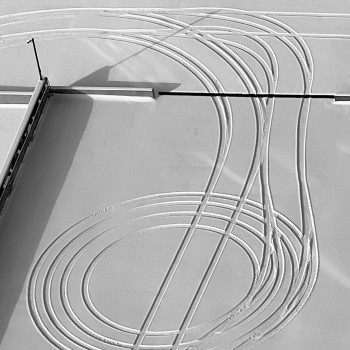 It’s just like driving the same route every morning, where you space out and then suddenly realize you’ve just gone 5 miles without noticing! It’s the same way with your daily routine. Physically, you may be moving, but you’re in the same rut as yesterday.
It’s just like driving the same route every morning, where you space out and then suddenly realize you’ve just gone 5 miles without noticing! It’s the same way with your daily routine. Physically, you may be moving, but you’re in the same rut as yesterday.
When you start exploring movements in new ways, it gives you a chance to break out of that autopilot mode, and learn new things about your body. When’s the last time you did a cartwheel?
GMB Trainer Amanda Pantone, has a nice anecdote here:
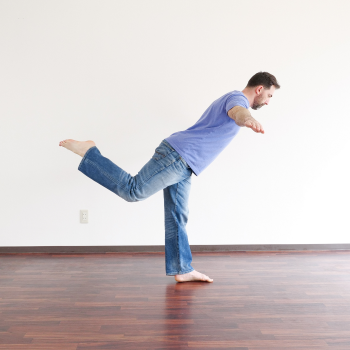 That generation always wants to do things “right”. I sometimes incorporate cognitive challenges into their workout as well. For one fashionable client (age 82), I had her name as many department stores as she could while doing back scales. She had fun with that. Harder than it sounds!”
That generation always wants to do things “right”. I sometimes incorporate cognitive challenges into their workout as well. For one fashionable client (age 82), I had her name as many department stores as she could while doing back scales. She had fun with that. Harder than it sounds!”
You notice here that play doesn’t mean it’s not challenging! But it does mean that you’ve established your own personal levels of safety and security to go beyond the first few tries at doing a thing.
The nuance of practicing versus playing is that play does come out of what you “can already do well” but also as a way to nudge past that. The nudging past that is perhaps the most difficult part to convey and to implement. But one way to help thinking about it would be that in the moment thinking (or not thinking) “I gonna try this cuz why the hell not!?!”
In that you don’t have to hype yourself up to try something, or warm up or visualize or any other kind of preparation. You feel just safe enough to try it without anxiety but also have this excitement from that slightest inkling of danger.
Another way of thinking about this is to look at what you’ve spent a significant amount of time on, those are the areas where play becomes an excellent complement to that practice.
Play Breaks You Out of Your Ruts
Another very beneficial aspect -and I’ve seen this not just in my patients/clients but also for myself – is that changing intent/aim can be key to reducing pain in physical activities. Reframing why they are doing it and changing expectations does a lot for breaking out of the chronic pain cycle.
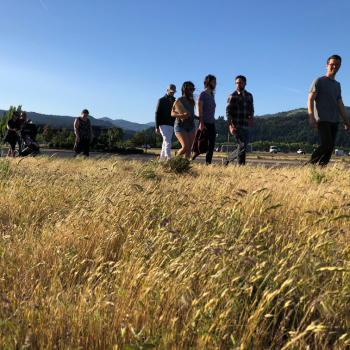 One example a colleague shared with me, was when a hospital nurse asked why she should add exercise since she was on her feet all day and active. And it’s true she was accumulating more steps and standing time than most of us do.
One example a colleague shared with me, was when a hospital nurse asked why she should add exercise since she was on her feet all day and active. And it’s true she was accumulating more steps and standing time than most of us do.
But the context is much different. The stress and busyness of that physical activity was very high. Compare this with the experience of taking a brisk walk outside with friends talking and joking around for an hour or so. Here we have the good physiological aerobic stress but none of the anxiety and bad stress that happens running back and forth between patients and paperwork.
Play can be a big part of improving a pain experience.
Jenn Pilotti has a practice centered on this style of working with clients with longstanding pain and shares with us:
We laughed about that moment recently, as she was navigating her body fluidly through space, painting imaginary pictures with her hands and feet.
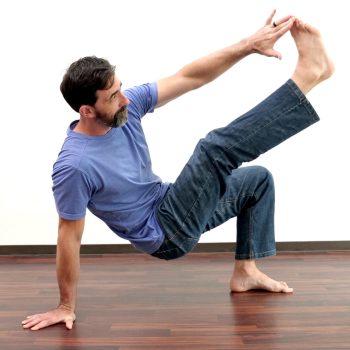 She trusts her body more and is more connected with the way she moves. Movement (and by extension fitness), shouldn’t be a punishment—it should be a celebration, one that elicits moments of joy and curiosity. One way to create those moments is by continuing to use elements of play regularly.“
She trusts her body more and is more connected with the way she moves. Movement (and by extension fitness), shouldn’t be a punishment—it should be a celebration, one that elicits moments of joy and curiosity. One way to create those moments is by continuing to use elements of play regularly.“
How to Make Play a Part of Your Practice
And now we come back to “just move and have fun!” Because that commandment actually has some good context and meaning around it now. The creative exploration of movement that we all engaged in throughout childhood falls by the wayside, but it doesn’t cease to be important.
As kids, when we were learning all sorts of new things, we spent a lot of time exploring how our bodies moved with purposeful playing. As adults, we still engage in learning skills and building essential attributes, but we often miss the exploration that gives us real ownership of those abilities.
Don’t get so caught up in your regimented routine that you don’t allow yourself to explore and have fun with movement and learn to flow.
Make Movement Exploration a Daily Habit
There’s no question that structured training is the best way to achieve particular skills or fitness goals. But if you limit yourself to only moving through structured programming, you miss out on what unstructured practice has to offer. In the school playground, we found lots of different ways to maneuver our bodies through space, and there’s no reason that creativity has to stop when we reach adulthood.
Be creative. Give your joints and muscles the chance to move in as many ways and combinations as they (safely) can. And learn to enjoy moving again.
Elements: Start Moving Better Right Away
Experience more freedom of movement, more confidence in moving through daily life and other activities, and see how much fun “training” can be.



